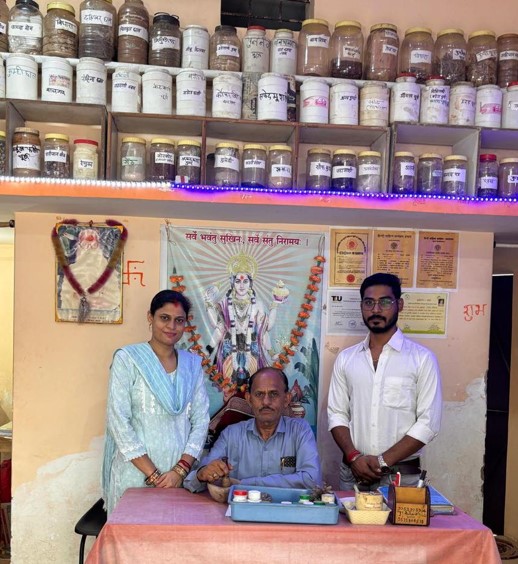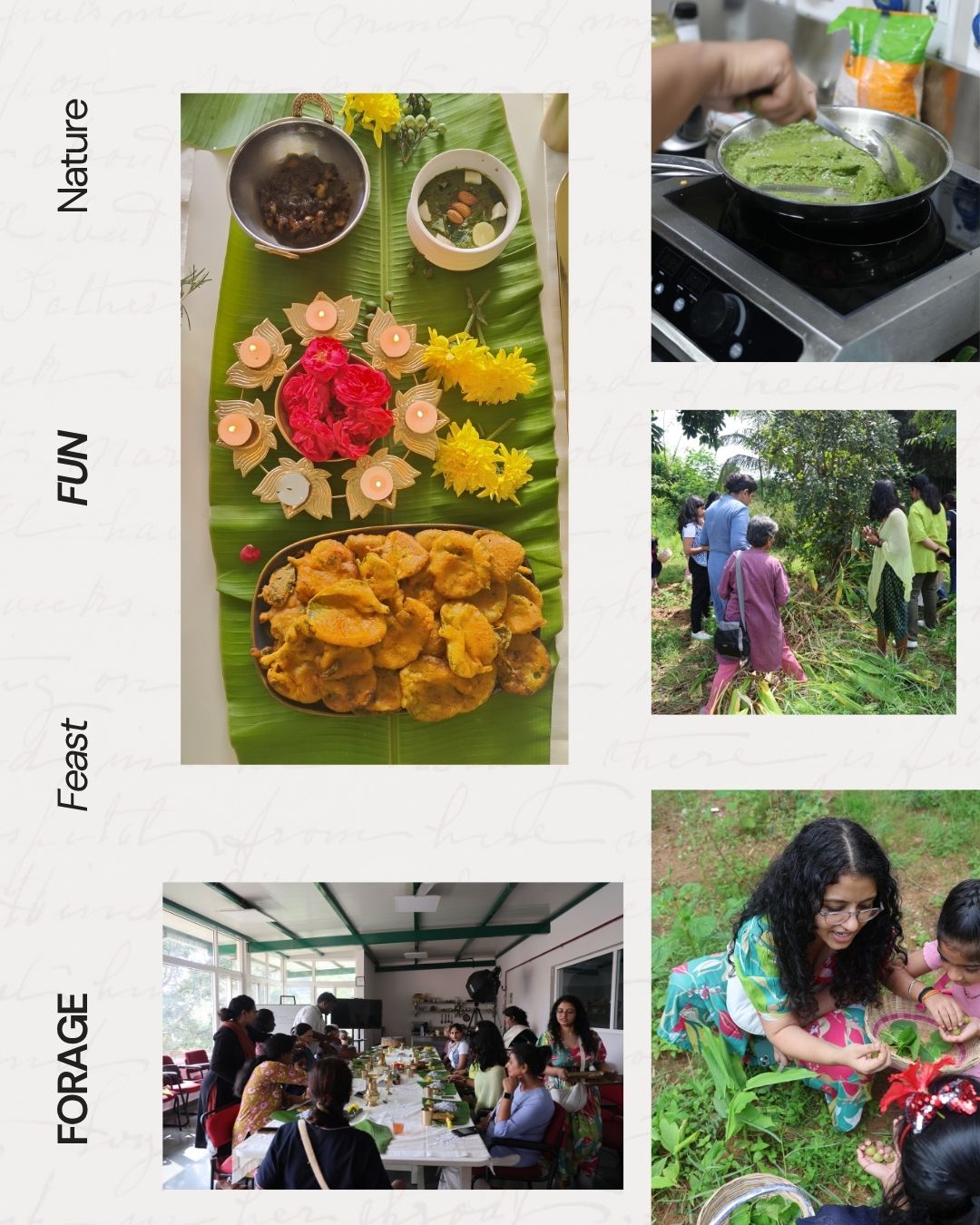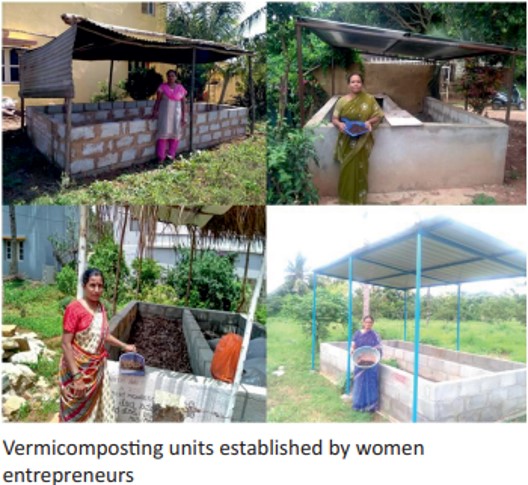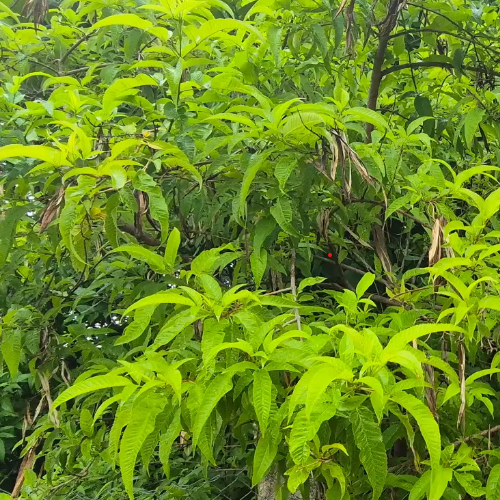Kapittha (Wood Apple) - An Ingredient as Food and Medicine
Bael is a revered tree in Indian culture, the sharbat a popular drink during seasonal festivals and religious ceremonies. Know about the fruit Bael / Kapittha / Belada hannu / Wood Apple and its nutritional importance here

I first encountered this strange fruit during Ganesha Chaturthi at my grandma’s home in Chennai. I picked up fruit and sniffed it. "Well here’s how you can tell it’s ripe. Drop fruit gently to the floor. If it doesn’t bounce, it’s ripe." I tried. Fruit stayed put. "Well then let’s cut it open," said my grandma. She cracked the shell open to reveal a golden brown pulpy mass inside. It smelled vaguely citrusy, spicy, and slightly off.


As the name suggests, this fruit looks like an apple made of wood. It has a hard wood-like exterior that conceals creamy orange pulp.
Somehow it resembles tamarind due to its sour-sweet taste. Its pulpy texture is not appetizing, but soaked and strained, the juice that emerges is a delicious combination of tastes. These are said to be a favorite of Ganesha and are often served during festivals.
Names in different languages: (FRLHT's ENVIS Centre on Medicinal Plants, Bengaluru)
- Hindi: Beli, Katbhel, Kaitha,
- English: Wood apple Elephant apple limonia Kaitha
- Bengali: Katbhel
- Gujarati: Kotha
- Kannada: Kadu nimbe, Belada hannu.
- Malayalam: Cheru kattunarakam, Vilankai.
- Marathi: Kavath, Kauth.
- Tamil: Vilaa, Vizhaangai.
- Telugu: Kapitthamu, Parupuvelaga
People might often get confused between Aegle marmelos (L.) commonly known as Bael or Wood Apple and Limonia acidissima L also called Wood Apple or Elephant Apple. However notable differences exist for example the texture and aroma.

As per the Bhojanakutuhalam 14th chapter,
Properties of Ripened fruit:
- Rasa (Taste) - Madhura (Sweet), Amla (Sour)
- Guna (Qualities) - Guru (Heavy for digestion), Snigdha (Slimy in nature)
- Veerya (Potency) - Sheeta (Cold)
- Vipaka - Madhura (Undergoes sweet taste after digestion)
- Effect on dosha - Alleviates pitta and vata

Karmas:
- Sangrahi - absorbent useful in diarrhea IBS
- Rochana - improves taste, relieves anorexia
- Hrudya - acts as cardiac tonic congenial for heart
- Durjara - takes a long time to undergo digestion (1,2,3,4)
Properties of Unripe fruit:
- Sangrahi - absorbent useful in diarrhea, IBS
- Kashaya - astringent
- Laghu - light to digest
- Lekhana - has scraping property useful in balancing Kapha. Useful in respiratory disorders. Helpful in cholesterol and clot deposition in blood vessels
- Rooksha - dry
- Vishaghna - anti toxic
- Kanthaghna - decreases voice
- Balances Kapha Dosha
- Increases Vata and Pitta Dosha (1,2,3,4)
What will happen if you eat excess?
The ripened fruit is heavy for digestion. Intake in excess quantity can lead to decreased digestive capacity. Similarly, unripe fruit can cause hyperacidity if taken in excess quantity. The unripe fruit is not ideal in case of throat/voice disorders
Nutritional composition of Wood apple: (IFCT, 2017)

Some of the recipes that I found exciting are as follows:
- Wood apple chutney: A tangy chutney made with wood apple, spices, and jaggery. Recipe here
- Wood apple juice: Refreshing juice with wood apple, jaggery, and a hint of black salt. Recipe here.
- Bael panna: Spiced wood apple juice with jaggery, black salt, and cumin powder. Recipe here.
- Wood apple thokku: Savory wood apple preserved with jaggery, spices, and optional tamarind. Recipe here.
- Wood apple chaat: A vibrant chaat with wood apple, vegetables, chutneys, and spices. Recipe here.
- Wood apple curry: A flavorful curry featuring wood apple, spices, and a rich, savory sauce. Recipe here.
Next up in our #FoodAndMedicine series is Citron fruit also called Kanchikai. Stay tuned! Read about the previous ingredient “Jamun” here.
Join "Introduction to Ayurveda Dietetics." This course will introduce you to the specialized vocabulary related to food in Ayurveda. It serves as a primer to initiate your journey into this medical science of "Ayu," or life!
References:
- Bhojana Kutuhalam
- Charaka Samhita, Chikitsa Sthana
- Sushruta Samhita, Sutra Sthana, Chapter 45, Verses 19-21.
- Ashtanga Hridayam, Sutra Sthana, Chapter 9, Verses 15-17.
Introduction to Ayurveda Dietetics


.png)
.jpeg)




